Types of Cables and Connectors in Networking
Network cables are wires made of copper and glass. Application of various network cables to connect and transfer data between computers and routers and switches and storage networks (between network components and components). A network cable can be considered a medium in which data flows and is transferred from one device to another. Now that we know the applications, we can talk about the types of network cables.
Network cable history
The year was one thousand eight hundred and forty-four. Samuel Morse founded the first idea of digital communication by building the telegraph. You may think that what we have available today is not the same as what Morse offered, but in the end, what is clear is that they are two steps in the same direction from a basic point of view. Perhaps the biggest difference is the acceleration they each offer. In the mid-nineteenth century, the highest per second transfer was the average of two to three lines and dots in the telegraph, but today the transfer has reached one gigabyte per second.
A few years later, the Frenchman Emile Budat built the telegraph press, which was processed using a five-bit keyboard and code. In this method, telegraphic messages were sent and received virtually. However, the baud rate, which is derived from the name of the same scientist, is used in serial communication. In later years, seven-bit codes with 128 characters and eight-bit codes with 256 characters were created.
Communication speeds have increased in the last forty years, and these relationships between computers have become a basic issue. Despite the different standards, what is clear is that the need for more and better equipment is felt more and more day by day.
Types of network cables and their applications

Regarding the types of network cables, it should be said that there are different types, and the selection of the appropriate type of network cable depends on the type of structure and topology of the system. System architecture and the size of the network are other factors influencing this issue. However, the protocol used is another important factor in selecting a network cable.
First of all, if you know the network cable correctly and know what it has to do with other network features, you will not need to troubleshoot in the future, which can take you hours. Even if you have little information about network cable, reading this article will help you get acquainted with all its dimensions.
In LANs, which are called LANs, and in WANs, the type of cable you play plays an important role. Although in the first option, it is up to you to choose the type of network cabling, the second type, the operator decides what type of network cabling to do.
There are different types of network cable required. The twisted-pair cable is the twisted pair and the Unshielded Twisted cable or UTP. Another type of network cable is a coaxial cable. There are several pairs of cables and other media called wireless and wireless, which is called Wi-Fi.
Types of network cables in terms of material
In LANs, there are two main types of network cables. This division depends on the type of cable.
Copper network cable
The transmission of signals in copper wires is done using electric current and voltage. Copper cable is mostly used in short wiring, such as inside ducts and between computers, wall plates, and patch cables or interconnections. The more copper is used in the cable, the more bandwidth the network cable will have.
Copper cable type
- Coaxial cable includes THINNET and THICKNET and is mostly used in industry.
- Twisted pair cable has two types, which we will discuss in the following article.
Fiber optic network cable

The fiber-optic network cable is glass and transmits the signal with pulses and light waves. Fiber optic cable is mostly used in connections that are made between buildings or connections that are made at high-speed pulses. Places where bandwidth should be, such as data centers, or where there should be high capacities, such as airports and banks, are Fiber optics used to transfer large volumes of data easily.
There are several types of fiber optics, which are listed below.
- INGLE MODE is used when it is far away.
- MULTI-MODE is another type of optical fiber used for cases requiring high capacity and capacity.
Twisted Pair Cable
Undoubtedly, the widest network cables can be called twisted pair cables, which is called TWISTED PAIR in English. Examples of the scope and scope of paired cables are intertwined from local area networks (LANs) to offices, stores, and shops. The cable can also find twisted pair cable on many Ethernet networks.
Four pairs of thin wires form these cables placed side by side under the outer sheath. The reason why twisted pair cable is so useful is given in the following article.
Noise absorption in twisted pair cables
Each inch of each pair of wires is twisted with a special twist so that they do not interfere with the signal or CROSSTALK on other pairs and are not affected by other electrical devices. The more twisted wires are, the higher the transmission rate and the higher the price of the wire. These torsions themselves can classify network cable types under the heading CAT or CATEGORY, which we will also discuss.
The question that arises and brings many challenges is about the noise capacity of this network cable. You should know that the more the pairs of wires are twisted and twisted around each other, the more the noise can be reduced because of the electromagnetic interference. Another important point in this regard is the reduction of signal loss. Improved bandwidth is another feature that will result from further twisting and twisting of the network cable. Electromagnetic interference is equivalent to Electromagnetic Interference, also abbreviated as EMI.
Twisted Pair cables
To set up a network properly, you must first know the network cables well. We will tell you the types of twisted pair network cables in full.
Unshielded Twisted or UTP cable

An Unshielded Twisted or UTP cable is a cable with twisted wires without any shield. And is mostly used in Ethernet. The common name for this type of network cable is U / UTP.
The cheapest cable among all network cables is the U / UTP network cable because there is no shield or cover on it, so it is used in networks where the importance of data is not so great.
Shielded Twisted Pair or STP

SONY DSC
Shielded Twisted Pair or STP cable, which has a twisted pair, has a cover and shield used in the token ring and Gigabit Ethernet networks.
These network cables are used in environments where there is more noise. For example, in cabling where the distance is long or when the network cable is close to where the magnetic circuit of the power cable is located.
In this type of cable, the shields are wound around the wires in various ways. If the letter F is mentioned in the name of the STP file, it means it is a foil drive, and if the letter S is written, it means it has a shield or protector.
Foil is used to prevent noise, but shields discharge the inductive effects and static electricity into the earthing system in the STP network cable structure.
There are several types of STP shielded network cables that we will explore further so that you can easily understand the differences and recognize them.
Types of shielded network cables or STP
 In computer networking, we have seven types of network cables with shields. These seven types are:
In computer networking, we have seven types of network cables with shields. These seven types are:
- U / FTP: There is a foil around each pair of wires.
- F / UTP: There is a foil around four pairs of wires, i.e., all wires.
- S / UTP: There is a shield around four pairs of wires, i.e., all wires.
- SF / UTP: There is a shield and a foil around four pairs of wires, i.e., all wires. It is also called STP.
- S / FTP: There is a foil around each pair of wires and a shield around four pairs of wires, i.e., all wires.
- F / FTP: One foil around each pair of wires and one foil around the whole wires.
- SF / FTP: There is a shield and woven cover next to the foil around the wires, and each pair of wires also has foil, which of course, is the most expensive among network cables. So far, we are very familiar with the types of twisted-pair network cables. We will measure the types of network cables called Category or Cat.
Cat or Category in a variety of network cables
UTP cables have a wide range and variety; therefore; They can be used in many works. It features easy to work with and is easy to install, and can be extended or troubleshot. Let’s take a look at the types of network cables. The fastest network cables are Cat6 and Cat7 cables.
What has become clear to us is that the higher the cat number, the newer the technology we have in terms of bandwidth and transmission rate and the reduction of noise. For example, in cat 5e, the data transfer rate has improved compared to cat 5, or the bandwidth of Cat 6a has doubled compared to cat6. Another benefit is that the amount of wires twisted together in cats is different, which, as we said, affects the noise level of the computer network cable.
Cat1 network cable
This type of cable was introduced in 1985 and is used for audio transmission and telephone systems. This network cable is not twisted or twisted and does not support traffic and network. Telecommunication companies that provide ISDN and PSDN use Cat1 UTP cables. They connect the user’s location to the telecommunication network with Cat 1 cable. Cat1 UTP cable may still be found in some older homes. But in newer homes, the Cat1 UTP cable has replaced the first type with Cat3 UTP cable or Cat5 UTP cable. The rest of the cats are network-specific and can support telephone and computer network traffic.

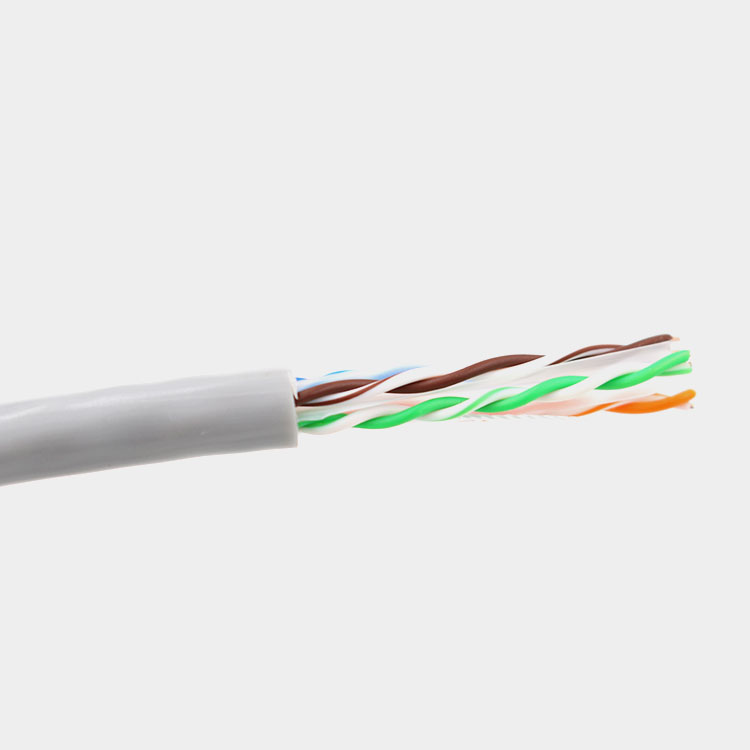
Cat2 network cable
The Cat2 UTP cable has four wires, each twisted in pairs and used in ring networks. And are often used in token ring networks. Cat2 UTP network cable speed is 4 Mbps. The use of this type of network cable is not very common and may be seen in older telephone systems, especially those that do not support TIA / EIA-568 standards.
Cat3 network cable
The Cat3 UTP cable has four pairs of twisted copper wires and is mostly used in the token ring and 10BaseT networks (and the letter T indicates TWIST. And can support speeds up to 10 Mbps. Later distances of up to 100 meters can be wired, and perhaps the Cat3 UTP cable is used in some older telephone systems, with a maximum bandwidth of 16 MHz on the Cat3 UTP cable.
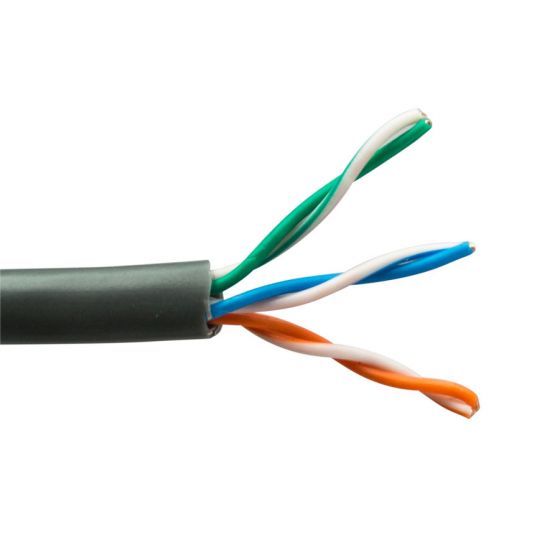
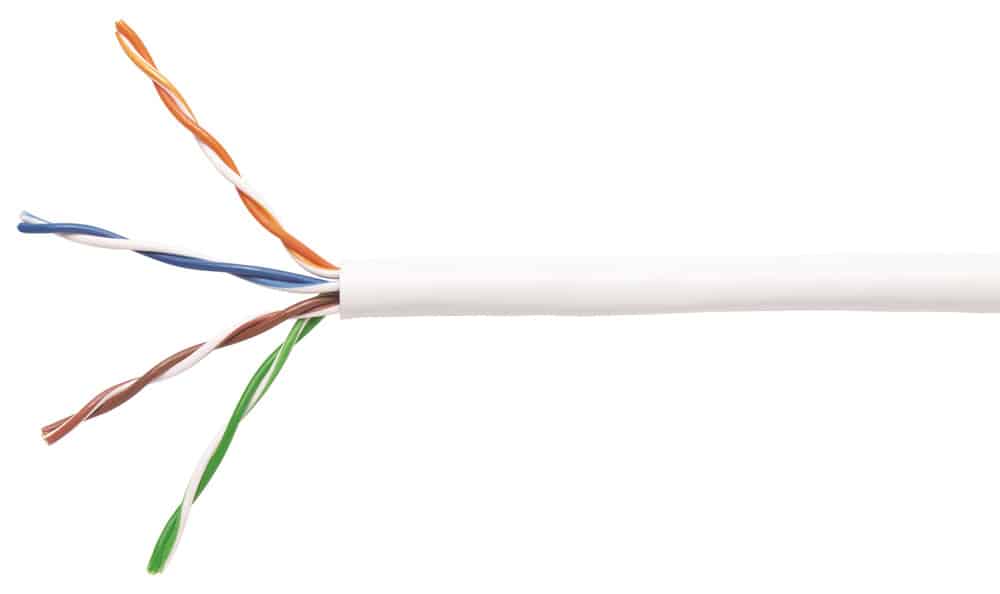
Cat4 network cable
The Cat4 UTP cable has four pairs of twisted copper wires and is often used in token ring networks, and supports up to 10 Mbps. Today, this type of cable is rarely used.
Cat5 network cable
The Cat5 UTP cable has four pairs of twisted copper wires with the RJ45 jack. The difference between Cat three and Cat four and cat 5 is that cat5 often uses Fast Ethernet in the token ring, Ethernet, and Fast Ethernet networks and supports up to 100 Mbps. The maximum bandwidth of the Cat5 UTP cable is 100 MHz.
Because the pair of wires per inch is more per inch in Cat5 UTP cable than Cat3 UTP, it provides us with more speed and length.
Cat5 UTP cable is used in home and work networks. To use at distances of more than one hundred meters, bridges or other network equipment must be used; otherwise, the network will be disrupted, for example, it may cause the package to be lost and the transmission speed to be reduced.

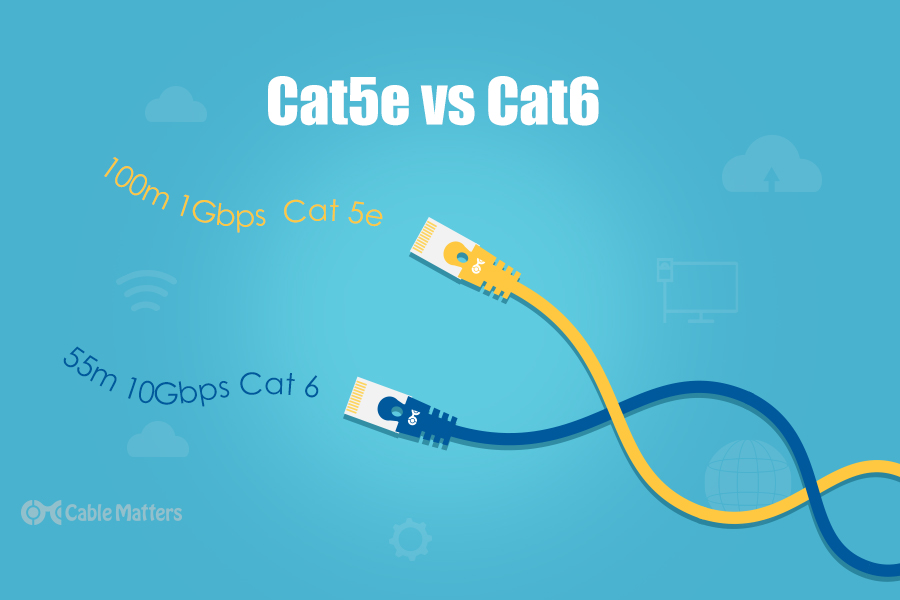
Cat5e network cable
Cat5e UTP cable is often used in Ethernet, Fast Ethernet, and Gigabit Ethernet networks. The Cat5e UTP network cable has a maximum speed of 1 Gbps and 100 MHz.
Cat6 network cable
Cat6 UTP cable is mostly used in Gigabit Ethernet and 10 G Ethernet networks and can support up to fifty-five meters, up to 10 Gbps. And if this distance reaches one hundred meters, it will be reduced to 1 Gbps. The maximum bandwidth of the Cat6 UTP cable is 250 MHz.
The Cat6 UTP cable is similar to the Cat5e UTP cable. It has only one difference: a physical separator is placed between four pairs of wires to prevent electromagnetic interference. If you use Cat6 UTP cables in cabling, you should ensure that other components such as jacks, patch panels, patch cords, and پیر follow the same standard and that both ends of the cable are properly jacked.

Cat6a network cable
It was the year 2000 when the CAT6A UTP network cable was introduced, and it is most widely used in Gigabit Ethernet and 10 G Ethernet networks. And support up to 10 Gbps. The maximum bandwidth of the Cat6a UTP cable is 500 MHz.
Cat7 network cable
Cat7 UTP cable is often used in Gigabit Ethernet and 10 G Ethernet networks and supports up to 10 Gbps speeds. The maximum bandwidth of the Cat7 UTP cable is 600 MHz.
This network cable is used in data centers and backbone communication between servers and network switches and storage devices.
If you want to use Catra UTP cables in cabling, it is important to note that other components such as jacks, patch panels, and patch cords و have the same standard, and both ends of the cable are properly jacked…
In the Cat7 UTP cable structure, each pair of wires has one shield containing the other wires.
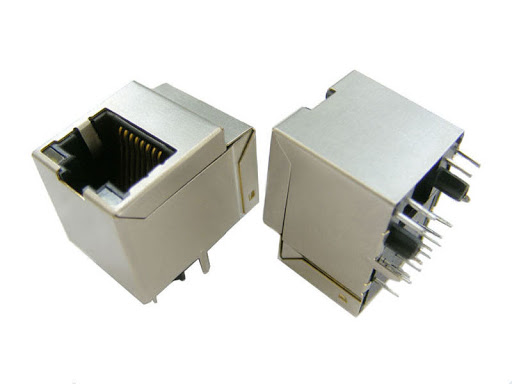
Jack RJ45
UTP cables work with standard connectors and jacks. The jack and connector used in them is RJ45 jack, an 8-pin connector designed by the telephone company. The RJ45 is similar to the RJ11 connector but overall has more width to accommodate more pins.
Four main colors of network cable
UTP cables are made of four pairs of wires with different colors composed of blue, green, orange, and brown.
If the gigabyte network is Ethernet, there are four pairs of wires, but if normal networks are the target and the medium speed is up to one hundred megabytes per second, only two pairs are used. These wires receive only the desired data and data between two devices.
In Gigabit Ethernet networks, all four pairs of wires are used, but in normal networks with speeds of 10 and 100 Mbps, only pairs 2 and 3 are used. These wires are used to transfer data, i.e., send and receive data between two devices.
Each pair of wires has two wires, one of which is colored and white striped. These pairs are intertwined with similar colors, but these twists should not be opened to twist your Ethernet. However, you need to open the screws by one centimeter to jack.
Green and Orange are designed for Ethernet networks at 10 and 100 Mbps speeds. If Gigabit Ethernet is also supported, brown and blue colors will be used. Blue and brown can be used for secondary Ethernet or telephone connections. Of course, such an application is not recommended because UTPs are not built from the ground up.
Application of network cable colors
The color of the twisted pair network cables themselves is different. Each color of the cable represents the brand of the cable manufacturer and the Cat of that cable. Brand-Rex, for example, produces Cat6 cables in purple and Cat5 in gray. Or Legrand, for example, produces CAT6 cables in blue and Cat7 in yellow.
All companies that produce OUTDOOR network cables choose black for it. The OUTDOOR cable should have the ability to show stability in the open air under wind, rain, sun, and even being chewed by animals.
Color and standard T568A and T568B in UTP network cable
First of all, we need to know how twisted pair cables are used and consider different types of network cable colors. It is important to know how the wires should be placed in the UTP cable, and the cable will not work if their standard order is not followed. There are two standards, T568A and T568B, in wiring. There are two common standards in wiring, called T568A and T568B. The T568A standard is also called the EIA. The T568B standard is also called AT&T.
The point that is very important and should never be forgotten is that; When dealing with a network that has already been set up, you should check which of these two standards you want to work with and follow the same standard. Otherwise, you will be challenged.
In the T568A and T568B standards, the individual PINs, i.e., 1, 3, 5, and 7, are always for corrugated wires and must be used for them.
Use of T568A standard in the network cable
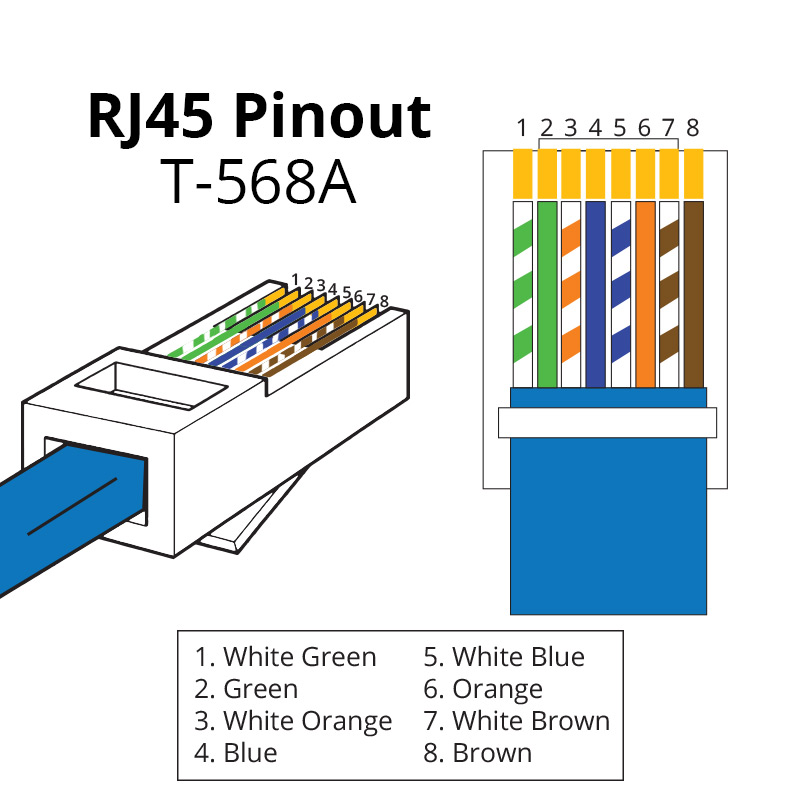
The green and orange wires we saw in the T568B standard will be replaced in this standard. Thus pairs 1 and 2 are placed in the middle four pins. This standard will be more compatible with the telephone connections of the telephone company. Because in RJ11, pairs 1 and 2 are in the middle four pins. You can see how the colored wires of the network cable in the T568A standard are placed in the picture below.
What are Cross Network Cable and Street Network Cable?
You should know that both T568A and T568B work the same way, but the difference is in the order in which the wires are placed next to each other (pairs two and three move together). If these two standards are combined in one cable, we will have Crossed or Crossover cable, which means cross, in Persian, and if they are not combined in one cable and only one standard is used at both ends of the cable, the straight cable will be Straight Through. Which is also called direct in Persian, we will have.
Connecting a PC to a hub and switch is the most important use of a cable street. Direct connection of two PCs without hubs and switches is the most important use of cross-cable, but connecting two hubs can also be used cross cable.
There is a circuit inside the hub that is responsible for doing the cross, so you only need to connect the street cable from the PC to the hub, but if we do not use the hub, we have to cross it manually, that is, use the cross cable. Do.
In the crossover transmit (TX) cable, one PC connects to another PC’s receiver or receiver (RX), and vice versa.
Note that Gigabit Ethernet does not require a cross-network cable and uses a street network cable, the two ends of which are automatically crossed by the network card. This is called MDIX. Most switches today support the Auto-MDIX feature.
The task of network cable strands
The network cable has eight wires, and each network cable’s function is different. This difference depends on what type of cable you are using: cross-network cable or street network cable. This is where the use of network cable colors becomes more apparent.
As you know by now, a cross-network cable uses a pair of green wires to receive or receive and a pair of orange wires to send or transmit on one side of the cable. On the other side of the cable, a pair of green wires are used to send or transmit, and a pair of orange wires are used to receive or receive. As we said, in a cross-network cable, the transmission or transmission (TX) of one PC is connected to the receiver or receiver (RX) of another PC and vice versa.
In a street network cable, a pair of green wires are sent on one side of the cable and received on the other side of the cable. A pair of orange wires are sent on one side of the cable and received on the other.
Everything you need to know about Bitcoin
What is a network cable holder?
The network cable holder, which is equivalent to Cable Manager, is used to arrange and arrange wires and cables inside the rack (patch cord, power cable, and network cable).
Types of network cable holders include:
- Horizontal holder
- Vertical
- Hooked
- With cap
Types of labels and networking cable numbers
Types of network cable labels are used to easily separate and identify network cables to access the cable we want. In this case; Network troubleshooting speed will increase.
Network cable round label and adhesive back label are among the network cable labels for labeling.
